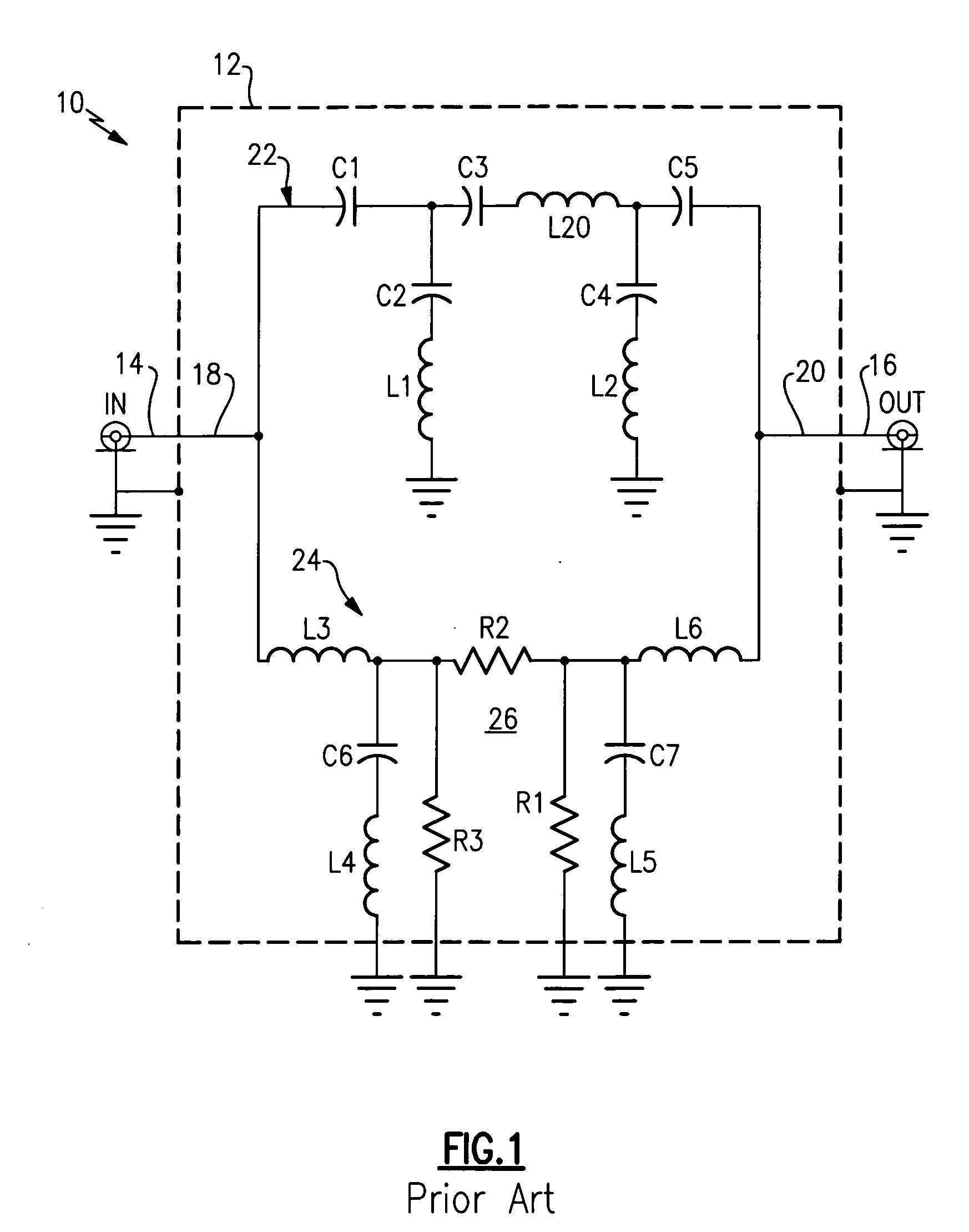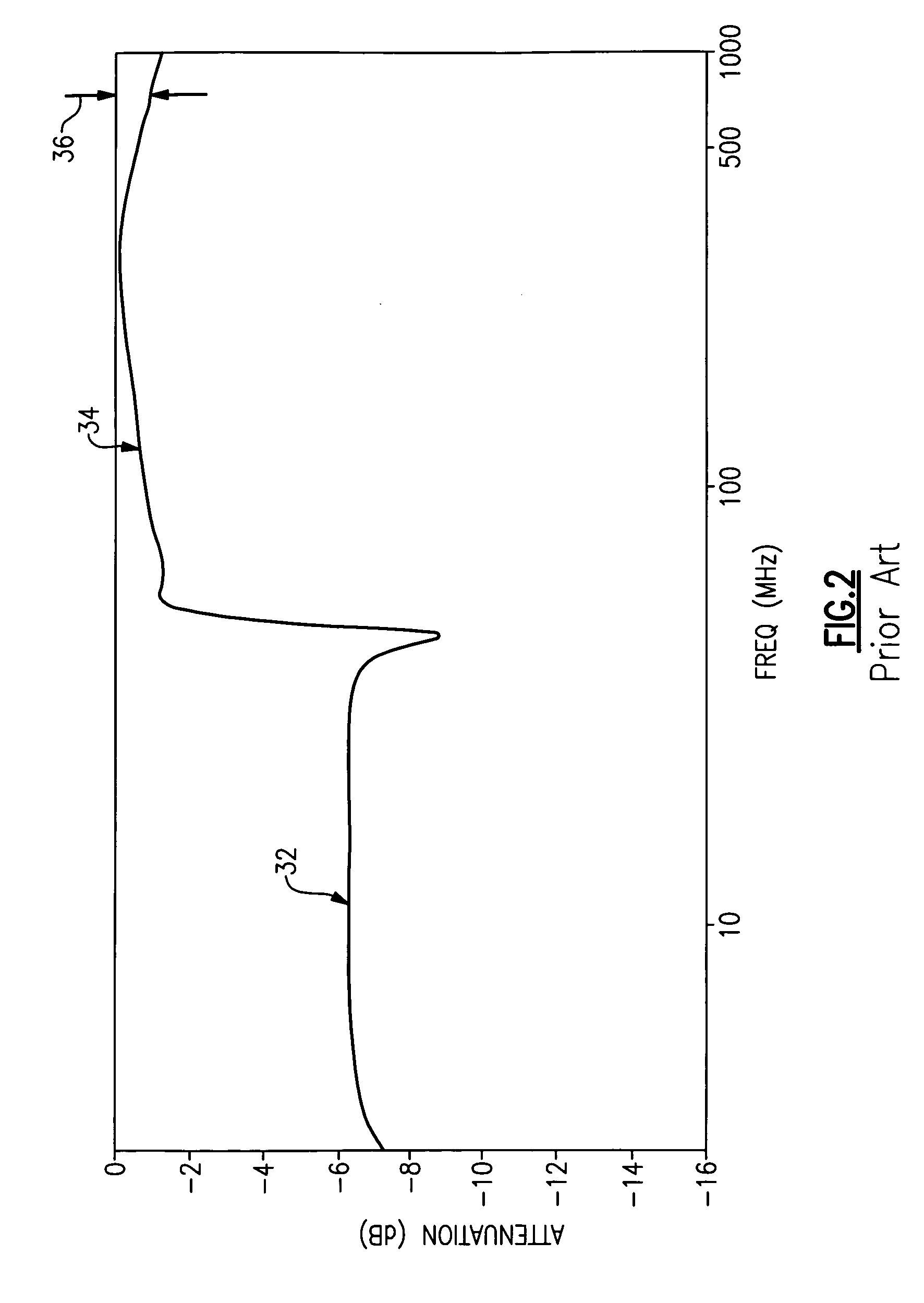Step attenuator circuit with improved insertion loss
a step attenuator and insertion loss technology, applied in the field of electronic filters, can solve the problems of increasing the insertion loss of the step attenuator, affecting performance, and affecting the performance of the attenuator, and achieve the effect of reducing costs
- Summary
- Abstract
- Description
- Claims
- Application Information
AI Technical Summary
Benefits of technology
Problems solved by technology
Method used
Image
Examples
Embodiment Construction
[0030]FIG. 3 shows a schematic diagram of a preferred embodiment of a step attenuator circuit 100, constructed in accordance with the present invention. Circuit 100 comprises an input line 118, an output line 120, a highpass filter network 122, a lowpass filter network 124, and an attenuator network 126 forming part of lowpass network 124. Highpass network 122 is an elliptic-function filter, consisting of: capacitors C1B, C1A, C2A, C3A, C4A, C5A, and C5B; and inductors L2SM and L4SM. Lowpass network 124 is an elliptic-function filter, consisting of: inductors L7SM, L8SM, L9SM, and L10SM; capacitors C8A, C8B, C9A, and C9B; and attenuator network 126. In this preferred embodiment, attenuator network 126 is a resistive Pi network, consisting of resistors R1, R2 and R3. Attenuator network 126 has an input node 128 and an output node 130.
[0031]The values of the capacitors and inductors of highpass network 122 are determined so that network 122 passes high frequency signals from 54-1000 M...
PUM
 Login to View More
Login to View More Abstract
Description
Claims
Application Information
 Login to View More
Login to View More - R&D
- Intellectual Property
- Life Sciences
- Materials
- Tech Scout
- Unparalleled Data Quality
- Higher Quality Content
- 60% Fewer Hallucinations
Browse by: Latest US Patents, China's latest patents, Technical Efficacy Thesaurus, Application Domain, Technology Topic, Popular Technical Reports.
© 2025 PatSnap. All rights reserved.Legal|Privacy policy|Modern Slavery Act Transparency Statement|Sitemap|About US| Contact US: help@patsnap.com



